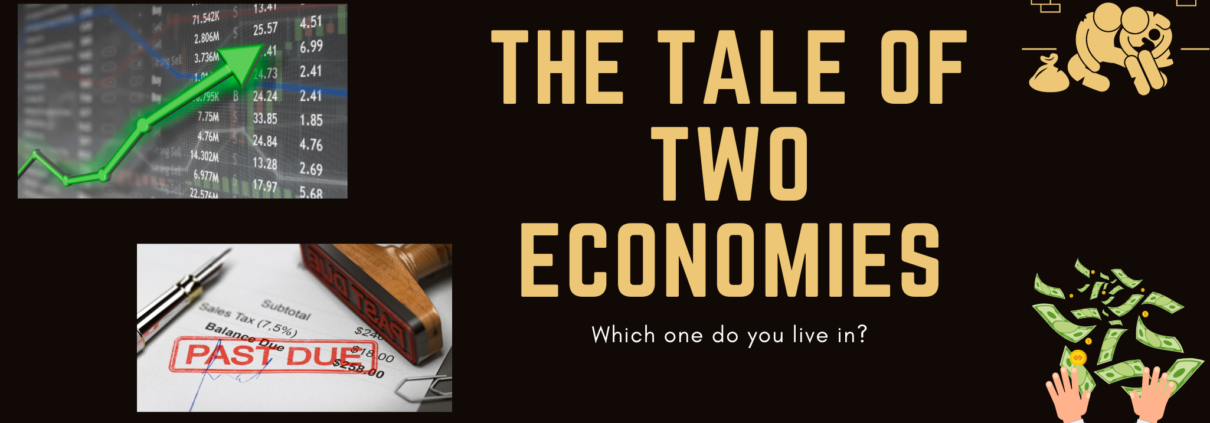The Tale of Two Economies
While the stock market has bounced back, economists are increasingly concerned about shifting unemployment trends. As evictions continue and there is still no consensus on a second stimulus package, unemployment is solidifying–indicating change from mostly temporary layoffs to permanent termination which then means a much longer road to recovery.
It’s almost like the US is living in two different economies. One is for the stock market and the wealthy. The other is for the millions at risk of eviction with no job and no relief that is being ground to dust under the success of the first one. Patrick Leary, the chief market strategist at Incaptial uneasily notes this discrepancy, “The S&P 500 has been impressive and has created a lot of wealth, but I am not sure that reflects the overall health of the economy.” That’s because the S&P 500 is weighted by big Tech firms like Apple, Amazon and Facebook that continue to do well. Billionaires have increased their wealth by $637 billion since the start of the pandemic. But that does nothing for the majority of Americans who are trying to put food on the table and take care of their families.
The most vulnerable among us and those who cannot afford to stay home are more likely to contract COVID and then once recovered, receive a hefty medical bill. Insurance companies have doubled their profits while patients are being sued by hospitals to cover their treatment.
For those who make over $20 an hour, the disastrous effects of the recession have been mostly avoided while employees who make less continue to be impacted, like the 60% of NY restaurant workers that are unemployed and are being forced into poverty. Even testing is biased. Frontline and essential workers are waiting weeks to receive test results while partiers in the Hamptons can receive an instant test so they can enjoy a night out.
The Paycheck Protection Program is another example of how big business was able to come out on top of small businesses and the working class. What was supposed to be a program specifically for businesses with under 500 employees, ended up being a boon to publicly traded companies when the language changed to 500 employees per location. In addition, data shows that “larger companies with connections to major national or regional banks got priority treatment in the program’s initial phase.” Many prerequisites disqualified small businesses from receiving aid, including requiring a checking account, credit card and a previous loan to be considered for the loan in the first place.
Far from being a great equalizer, COVID-19 has laid bare the vast chasm between classes, exacerbating pre existing inequalities. While politicians cry victory over stock market gains, the American people are suffering. A rising S&P 500 during a time with record unemployment and 80,000 small businesses permanently closing their doors is a symptom of a malfunctioning system, not a rebounding economy. Gary Cohn, a former White House economic advisor tweeted, “the stock market continues to reflect big businesses increasing their market share during #COVID19. If a small business closes, a larger business fills the void. We need to contemplate what this means for Main Street USA going forward. Is this really the future we want?”
No, it is not.
Yours in Strength,
The Take Back Control Team




Leave a Reply
Want to join the discussion?Feel free to contribute!